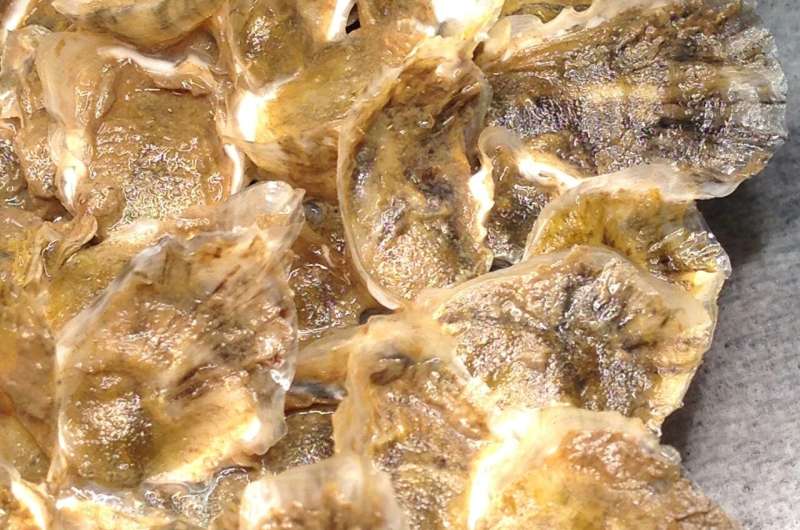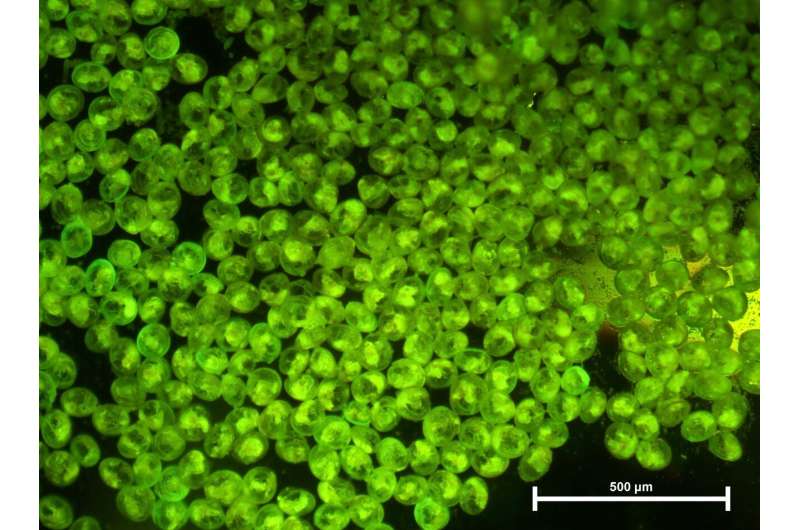Playing 'tag': Tracking movement of young oysters

A new publication in the journal Estuaries and Coasts investigates the use of a fluorescent dye to track movements of young oysters. The publication, "Field mark-recapture of calcein-stained larval oysters (Crassostrea virginica) in a freshwater-dominated estuary", provides new knowledge on methods for tracking oysters in low salinity environments common to coastal waters, particularly in the northern Gulf of Mexico. This information is important to understand where oysters settle and grow compared to locations of parent stocks and to guide management practices of oysters or any marine species with larval stages that live in the water column.
Free-living aquatic animals have the potential to be transported long distances during early life development. These movements can influence adult distributions and subsequently how populations are connected. By understanding larval transport pathways, we can better inform restoration efforts of remaining marine invertebrate populations globally. This information is particularly important for commercial species such as oysters, which are a valuable resource for Alabama and other coastal waters.
"By knowing where larvae originate and where they end up, we can determine what locations are better for oyster populations and provide managers with information to select sites for oyster restoration," said Haley Gancel, Ph.D. candidate, who is lead author on the research study. Gancel is a student at the University of South Alabama and works with Dr. Ruth H. Carmichael at the Dauphin Island Sea Lab.
Determining larval transport pathways is a challenge due to the microscopic size of larvae,high mortalities rates, and dilution in the marine environment. In this study researchers used a harmless fluorescent dye called calcein to track oyster larval movements in Mobile Bay, AL and found that oyster larvae are transported from lower Mobile Bay to Mississippi Sound, using dominate freshwater flow paths.
The approach used in this study can be applied to a wider range of marine species and help understand how larvae are transported in the marine environment and aid in restoration and management of this and other species throughout their range.

More information: Haley N. Gancel et al, Field Mark-Recapture of Calcein-Stained Larval Oysters (Crassostrea virginica) in a Freshwater-Dominated Estuary, Estuaries and Coasts (2019). DOI: 10.1007/s12237-019-00582-6
Provided by Dauphin Island Sea Lab














